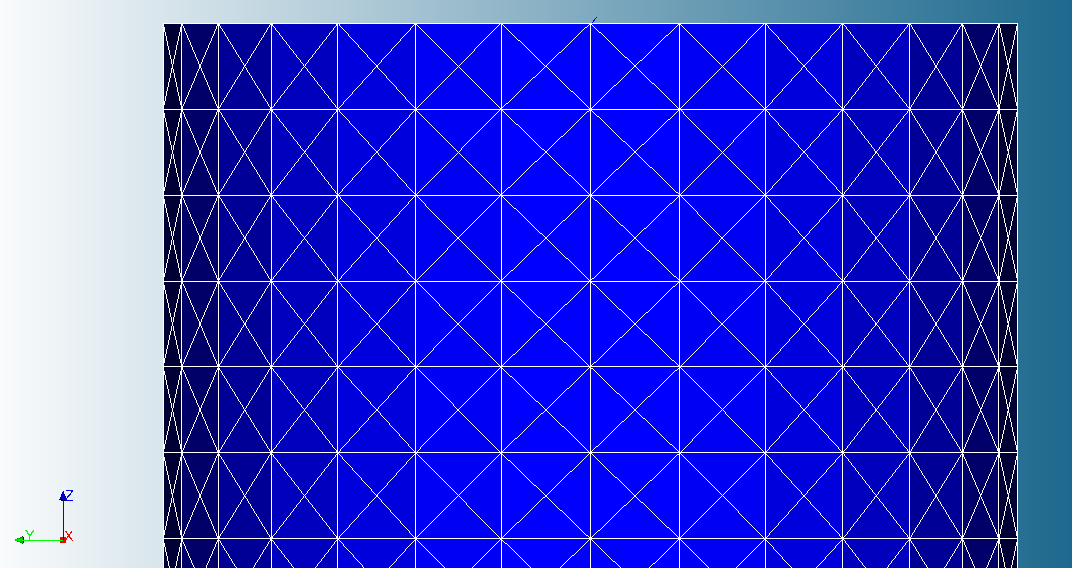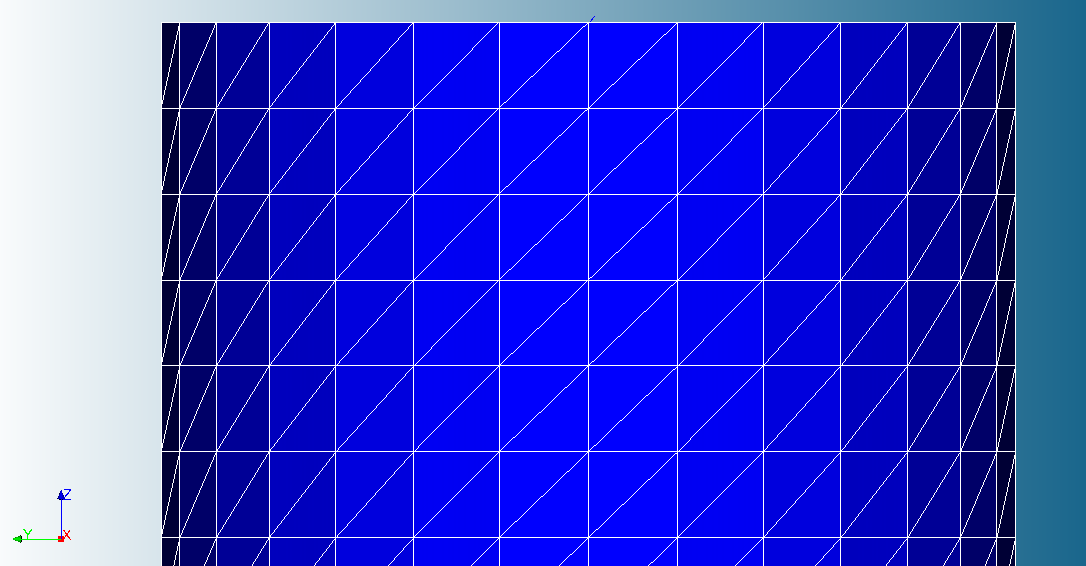5. C modeling#
5.1. Characteristics of modeling#
Modeling DKT (TRIA3)
5.2. Characteristics of the mesh#
Number of knots: 6030
Number of meshes and types: 12000 TRIA3
(The circle is cut into 30 segments)
5.3. Tested sizes and results#
Tab. 4. C modeling results
m=1 |
FF |
SF |
SS |
||||||
Aster |
Ref |
% diff |
Aster |
Ref |
% diff |
Aster |
Ref |
% diff |
|
n=2 |
656,432 |
654,216 |
0.34 |
657,048 |
657,308 |
0.04 |
666,260 |
663,543 |
0.41 |
n=3 |
1853,03 |
1850,29 |
0.15 |
1853,95 |
1851,81 |
0.12 |
1860,07 |
1855,44 |
0.25 |
n=4 |
3544,79 |
3547.66 |
0.08 |
3545.74 |
3549,113 |
0.10 |
3553,92 |
3552.95 |
0.03 |
n=5 |
5717.42 |
5737.23 |
0.35 |
5718.28 |
5738.70 |
0.36 |
5728.62 |
5742,74 |
0.25 |
n=6 |
8362,13 |
8416.32 |
0.64 |
8362.94 |
8417.79 |
0.65 |
8374,69 |
8421.97 |
0.56 |
+——-+———+——-+———-+———+——-+———-++++ |**m=1**|**SC** |**CC** | | + +---------+-------+----------+---------+-------+----------++++ | |**Aster**|**Ref**|**%** diff|**Aster**|**Ref**|**%** diff|||| +——-+———+——-+———-+———+——-+———-++++ |**n=2**|674,87 |671,113|0.56 |689,418 |687,249|0.32 |||| +——-+———+——-+———-+———+——-+———-++++ |**n=3**|1861.27 |1856,45|0.26 |1862.87 |1858,30|0.25 |||| +——-+———+——-+———-+———+——-+———-++++ |**n=4**|3554,36 |3553,29|0.03 |3554,85 |3553,91|0.03 |||| +——-+———+——-+———-+———+——-+———-++++ |**n=5**|5728.83 |5742,87|0.24 |5729.07 |5743,21|0.25 |||| +——-+———+——-+———-+———+——-+———-++++ |**n=6**|8374,82 |8422.00|0.56 |8374,96 |8422,24|0.56 |||| +——-+———+——-+———-+———+——-+———-++++
5.4. notes#
We couldn’t find the clean mode for \(n=1\) and \(m=1\).
Thanks to the symmetry of the pipe structure, we observe that the natural modes of \(n=2-6\) and \(m=1\) always appear in pairs.
Warning: when using triangle meshes, the results are very sensitive to mesh quality. For example, when using the mesh in Fig. 5 (b), we always observe a twist in the natural modes and also a frequency difference between the pairs of the symmetric modes.
Although this error decreases with a finer mesh, meshes with well-distributed elements in the structure are recommended, as in Fig. 5 (a).


Fig. 5. Examples of triangle meshes